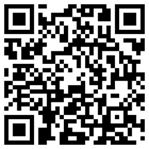Primary Immunodeficiencies (Inborn Errors of Immunity) - Fast Facts
This document has been developed by ASCIA, the peak professional body of clinical immunology/allergy specialists in Australia and New Zealand. ASCIA information is based on published literature and expert review, is not influenced by commercial organisations and is not intended to replace medical advice.
For patient or carer support contact AusPIPS, HAE Australasia, IDFA or IDFNZ.
![]() ASCIA PC FAST FACTS Primary Immunodeficiencies 202598.67 KB
ASCIA PC FAST FACTS Primary Immunodeficiencies 202598.67 KB
-
Inborn errors of immunity (IEI) include primary immunodeficiency (PID) disorders, and are a group of more than 550 potentially serious disorders that can lead to frequent or severe infections, swellings, and autoimmune problems.
-
IEI/PID disorders can be caused by defects in the genes that control the immune system and may be inherited. IEI/PID disorders are different to AIDS (acquired immunodeficiency syndrome), that is due to human immunodeficiency virus (HIV).
-
Symptoms of IEI/PID disorders often appear in childhood, but some can first occur in adults. Research and advances in therapies have resulted in improved health and a longer life for people with IEI/PID disorders. Early diagnosis of IEI/PID disorders is important, since delayed treatment can result in complications, which may be life threatening.
-
IEI/PID disorders can be grouped according to what part of the immune system is affected:
-
- Antibody deficiencies such as common variable immunodeficiency (CVID) and X-linked agammaglobulinaemia.
- Combined immunodeficiencies such as severe combined immunodeficiency (SCID).
- Phagocytic cell deficiencies such as chronic granulomatous disease (CGD).
- Immune dysregulation and autoinflammatory disorders.
- Complement deficiencies such as hereditary angioedema (HAE).
-
Immunoglobulin replacement therapy (IRT) is one of the most effective and commonly used treatments for some IEI/PID disorders. IRT can be given using intravenous immunoglobulin (IVIG) injected into the veins or given at home using subcutaneous immunoglobulin (SCIG) that is injected under the skin.
-
Other treatment options for IEI/PID disorders include antibiotics, immunomodulation, haematopoeitic stem cell transplants (HSCT) and HAE treatments.
© ASCIA 2025
Content updated May 2025
For more information go to www.allergy.org.au/patients/immunodeficiencies or scan the QR code
To support allergy and immunology research go to www.allergyimmunology.org.au/donate
